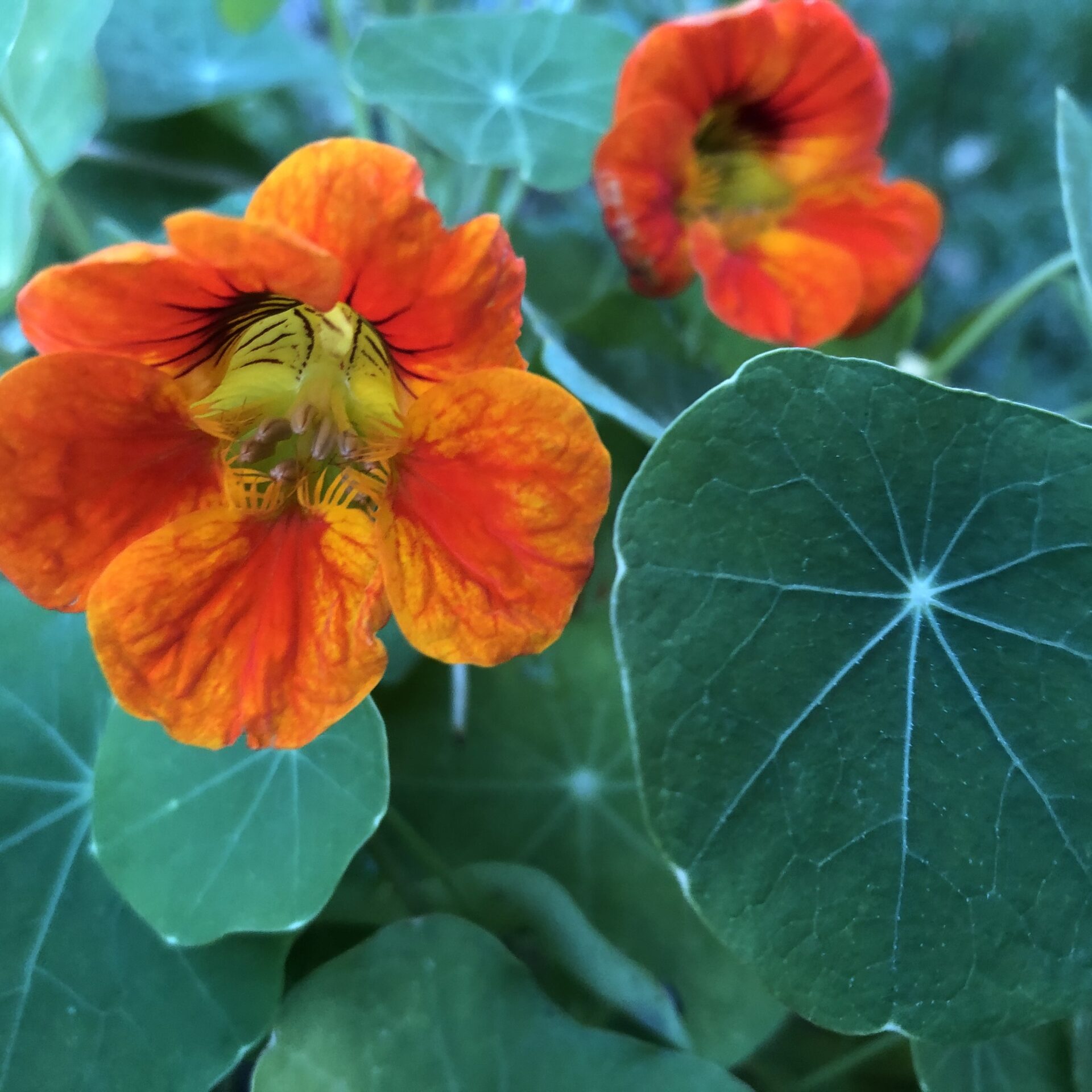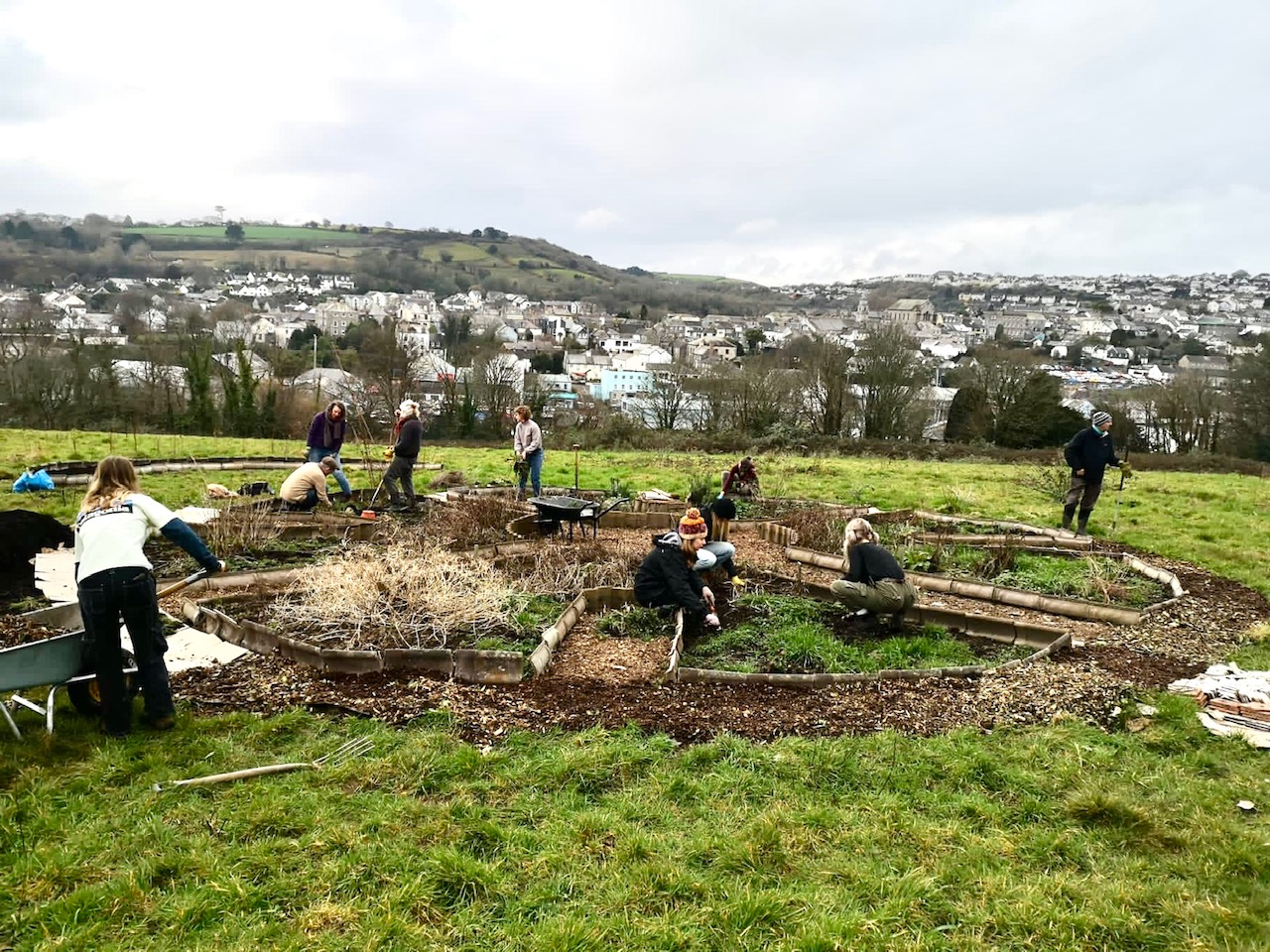As clinical herbalists, we are fascinated by the whole physiology of the actual birth process and its impact on physiological, psychological and spiritual levels. We have 4 babas between us and have been present at many births, each and every one of them a unique experience. From one culture and generation to another, herbs and rituals for birthing takes a profound journey across our lands.
 The birth of a baby is something special and a sacred time for a family to give the utmost care to a new baba and mother. Most cultures around the world perform rituals to welcome and celebrate a newborn into the family or community to give them the best start in life. This important rite of passage varies throughout each culture, some of which have been forgotten or morphed since ancient times, and others remain the same all important rituals for welcoming a baby into the world. Drawing on herbs for birthing rituals is a way of connecting a baby and mother with the landscape and plants around them as well as with the spiritual aspects of honouring the process.
The birth of a baby is something special and a sacred time for a family to give the utmost care to a new baba and mother. Most cultures around the world perform rituals to welcome and celebrate a newborn into the family or community to give them the best start in life. This important rite of passage varies throughout each culture, some of which have been forgotten or morphed since ancient times, and others remain the same all important rituals for welcoming a baby into the world. Drawing on herbs for birthing rituals is a way of connecting a baby and mother with the landscape and plants around them as well as with the spiritual aspects of honouring the process.
Playing an integral role for a healthy pregnancy and childbirth, the function of herbs though generations have deep roots in both traditional and modern beliefs for bringing a new life into the world. However unique our cultural rituals, traditions and recipes are, the one thing we all have in common is to ensure the health of mother and baby, from pregnancy, childbirth, and the postpartum period so there is a healing and connection with our babies focus on nurturing and strengthening the bonds between mothers and their children.
From conception onwards, there is so much physical, emotional and mental change happening for a pregnant person. During these times, like many others, herbs can be your allies to connect, support, nourish and heal.
Pregnancy Rituals Across Cultures
Herbs have been an integral part of various pregnancy rituals and traditions around the world. Different cultures have incorporated herbs for their symbolic meanings, medicinal properties and cultural significance. For example, in Europe, Asia, and North America, nettle is rich in vitamins and minerals, including iron, and is made into teas specifically to nourish the pregnancy.
Basil is considered a symbol of fertility and is sometimes incorporated into rituals or meals to bring good luck and prosperity during late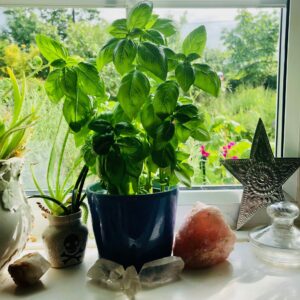 stage pregnancy in Mediterranean and South Asian customs.
stage pregnancy in Mediterranean and South Asian customs.
For other birthing rituals or superstitions, determining a baby’s sex, for example, will naturally also differ according to cultural folklore or myths. The tradition of dangling a ring, sometimes using a thread of their hair, is practised to see which way it spins, according to whether it’s a boy or girl. Alternatively, in some Caribbean countries, a spoon and a knife are placed under different cushions and then the mother is invited to choose one to sit on. If she sits on the spoon then the child is a girl, and if she sits on the knife then she’s having a boy. Perhaps, one of the most common myths that surround pregnancy is the shape of a woman’s belly – carrying high is a girl, carrying low is a boy.
Childbirth Rituals Around the World
Regardless of region, country and community, each has its own history of midwifery, and it is one of the world’s oldest professions, with midwives dating back to ancient civilizations. Historically, they could also be experienced wise women within the community who supported other women during pregnancy, childbirth and postpartum.
 These traditions, knowledge and skills were, and still are, passed down from one generation to the next, rather than medical training. This came much later when medical institutions and male physicians took over the practice of childbirth. Globally, the role of the midwife is constantly evolving according to cultural and medical differentiations, such as the focus shifted from emotional support to medical interventions.
These traditions, knowledge and skills were, and still are, passed down from one generation to the next, rather than medical training. This came much later when medical institutions and male physicians took over the practice of childbirth. Globally, the role of the midwife is constantly evolving according to cultural and medical differentiations, such as the focus shifted from emotional support to medical interventions.
One such change is the emergence of the doula movement. The term ‘doula’ comes from the Greek word ‘doulē’, from ancient Greek, meaning ‘a woman who serves.’ However, with the rise of hospital births, modern medicine and interventions was coupled with a decline in doulas, and the support they gave during childbirth. The role of doulas didn’t properly reemerge until around the 1970s when many expectant mothers relied on them for support to ensure the birthing experience is both positive and empowering.
After birth, the baby is not just the only focus, but the placenta is also honoured in many traditions. Often, it is cleansed, wrapped in cloth and buried in a sacred place within boundaries of a tribe or family’s land. In these instances, the placenta is thought to be the origin of a baby’s soul or spirit, and a burial symbolises its connection to their ancestors.
Another common tradition around the world is the notion of a postnatal recovery period to give mama lots of rest and connect with baba. These vary anywhere from a month to 40 days. During this time, a mother is given plenty of healthy food, massages and herbal remedies are given to help the recovery. In Japan, this is called ‘satogaeri’, in some Hispanic countries, it’s referred to as ‘La cuarentena’, and in Malaysia, ‘Pantang’. New mothers in Turkey drink the traditional beverage, Lohusa Serbeti, made with cinnamon, sugar and red food colouring. Essentially, these customs are universally designed to support nourishment, family, and community during this time.
3 Herbs for Birthing
Here are our 3 favourite herbs for supporting mama and baba, and if you want to learn more about birth herbs, here’s a great article about herbs in and around the birthing process.
Lemon Balm (Melissa officinalis)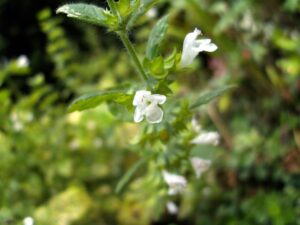
With a written medicinal history dating back over 2,000 years, Lemon Balm has been valued for having versatile applications throughout ancient times. In folk traditions, the enchanting properties of Melissa magic are harnessed to ward off evil spirits, nurture well-being, and bring about a sense of joy. Placing Lemon Balm sachets beneath your pillow or near the bed offers a rejuvenating and tranquil sleep. Lemon Balm is subtle yet potent, bringing a presence that exudes a calm and resilient energy.
Lemon balm is a herb renowned for wonderfully good cheer and calming effects. Due to the herb’s spiritually uplifting nervine properties, we often prescribe teas to help reduce anxiety and promote relaxation during childbirth.
Getting the oils out and practising that delightfully fragrant art of aromatherapy is something that we treasure for birthing rites to create a soothing atmosphere, and lemon balm’s calming aroma can alleviate anxiety, uplift and aid relaxation in the space.
We also love to add the leaves into a bath for the labouring woman to find some relief within. Bathing is a ritualistic practice throughout pregnancy and during the actual birth.
During a birthing ritual, a warm cup of lemon balm tea with a little honey for energy can be offered to the mother to help relax and ease tension, or alternatively the tea can be frozen to make ice cubes that can be sucked
In addition to Lemon balm’s calming properties, this herb also supports:
- digestive issues such as bloating, gas, indigestion and morning sickness
- stabilise mood and balance hormones
- neutralise harmful free radicals in the body to support general well being
Lemon balm has a zingy lemon fragrance, which is aromatic oil, the compound, that is associated with the qualities of calmness and relaxation. Some cultures might incorporate the herb into rituals for symbolic reasons, representing a wish for a peaceful and serene birthing experience. lemon balm is known as a cheering herb of happiness that brings light to any situation.
Daisy (Bellis perennis)
How can anyone not love the simplicity and coloured petals of a daisy? They’re one of the most spirited flowers you can give to someone for a joyful occasion, which is why they’re often given for celebrating life’s milestone events – no more especially so than for the birth of a newborn.
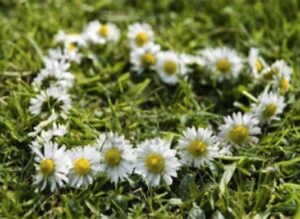 Representing new beginnings, purity, fertility and maternal qualities, the daisy’s symbolism traces back to the tales of Freya, the Norse goddess of love, fertility, and beauty, whose sacred flower was the daisy. Consequently, daisies frequently carry associations with the process of childbirth.
Representing new beginnings, purity, fertility and maternal qualities, the daisy’s symbolism traces back to the tales of Freya, the Norse goddess of love, fertility, and beauty, whose sacred flower was the daisy. Consequently, daisies frequently carry associations with the process of childbirth.
Daisies, believed to be more than 4,000 years old, are often associated with fertility and the cycles of life. The birth of a child is often seen as a celebration of life and the continuation of family, making flowers like daisies fitting symbols. In contrast, Celtic mythology believed that whenever a young baby passed away, it was said that God would drop daisies onto earth to assist the parents with their loss.
Giving a daisy plant to new parents for their garden is a thoughtful gift that continues to thrive, offering blooms year after year. The new family can enjoy the blossoms of the daisy, a reminder of the sacred birth of their child. The daisy’s symbolic significance, often associated with purity, makes it an ideal addition in birthday flower arrangements for both children and parents who are celebrating the arrival of a newborn.
During the 1800s, the phrase “ups-a-daisy” was frequently employed to coax children to stand up after a fall. Over time, this evolved into expressions like “oopsy daisy” or “whoops-a-daisy,” used as exclamations following a stumble or mistake. Similarly, The tradition of making daisy chains, or flower chains in general, has a long history and is often associated with children and playful activities.
Chamomile (Matricaria chamomilla)
The age-old herb, Chamomile is celebrated in many cultures and traditions for medicinal and soothing properties. Depending on cultural beliefs and symbolism, chamomile can hold specific significance related to childbirth. This bright yellow flower has associations with fertility, purity, and calming effects making this a perfect herb brought into birthing rituals across the world.
A warm sweetened chamomile tea kindles a calming atmosphere during the birthing process as part of a ritual to provide comfort and relaxation. In this sense, chamomile reaches beyond the physical properties to represent emotional and spiritual support during childbirth.
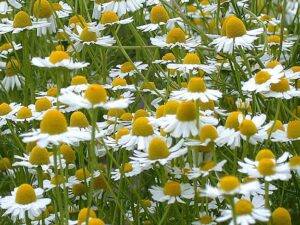 Chamomile is super for herbal baths for skin-soothing and calming effects. In birthing rituals, mothers can take chamomile-infused baths before, during or after childbirth as a form of relaxation and rejuvenation. Similarly,
Chamomile is super for herbal baths for skin-soothing and calming effects. In birthing rituals, mothers can take chamomile-infused baths before, during or after childbirth as a form of relaxation and rejuvenation. Similarly,
Chamomile essential oil could be infused during birthing rituals to create a peaceful environment and offer emotional support to labour.
Plus, the antiseptic properties make this herb ideal for postpartum care. In certain traditions, chamomile-infused solutions, such as compresses or washes, can be applied to promote healing and comfort for the new mother. The anti-inflammatory agents present in chamomile tea can also help with sores after a long labour, and is even said to help with milk production.
Here, we’ve explored just a handful of herbs and rituals relating to birthing. Welcoming baba into the world essentially relies on cultural norms, family traditions and religious beliefs. What is common practice in one country might be taboo in another, and while giving birth is universal, the customs surrounding childbirth really can differ around the world.
Don’t stop reading yet…!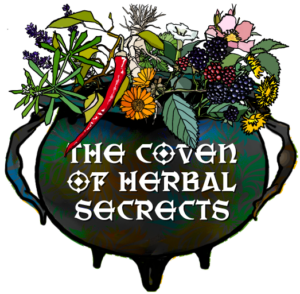
If you want to know the more about Herbs in Rituals, why not join our Coven? You’ll soon have access to our best resources while increasing your confidence and knowledge about the magic of herbs and master the art of herbal remedy creation, spells and rites, plus step by step guides to getting to know your plants better.
Herbs in Rituals will cover the topics above more in-depth, plus:
- Symbolism of Herbs and Flowers in Funeral Rites
- Traditional customs from around the world
- Herbs in Weddings and Handfasting Rituals
- Historic Symbolism of Herbs in Weddings
- Making Rose Confetti
- And much MORE!
Plants are calling YOU



